Alright, let’s talk about one of nature’s most bizarre yet fascinating creatures: the giant anteater. Picture this: a creature that looks like it was designed by committee, with a snout borrowed from a pig, a tail that could double as a feather duster, and a tongue that’s longer than your worst Monday.
The giant anteater is a walking contradiction, and its existence is as intriguing as it is crucial to our ecosystems. Let’s dive deep into the world of these unique insectivores, stripping away the mystery, and getting up close and personal with an animal that defies the ordinary.
What is the Giant Anteater?
The giant anteater, known scientifically as Myrmecophaga tridactyla, is a creature that seems to have stepped right out of a child’s imagination. This mammal is the largest of its kind, dwarfing its relatives in the anteater lineup.
Native to Central and South America, this solitary wanderer roams the savannas and rainforests, playing a crucial role in controlling insect populations. But don’t let its odd appearance fool you; the giant anteater is a masterpiece of evolution, perfectly adapted to a life of slurping up ants and termites.
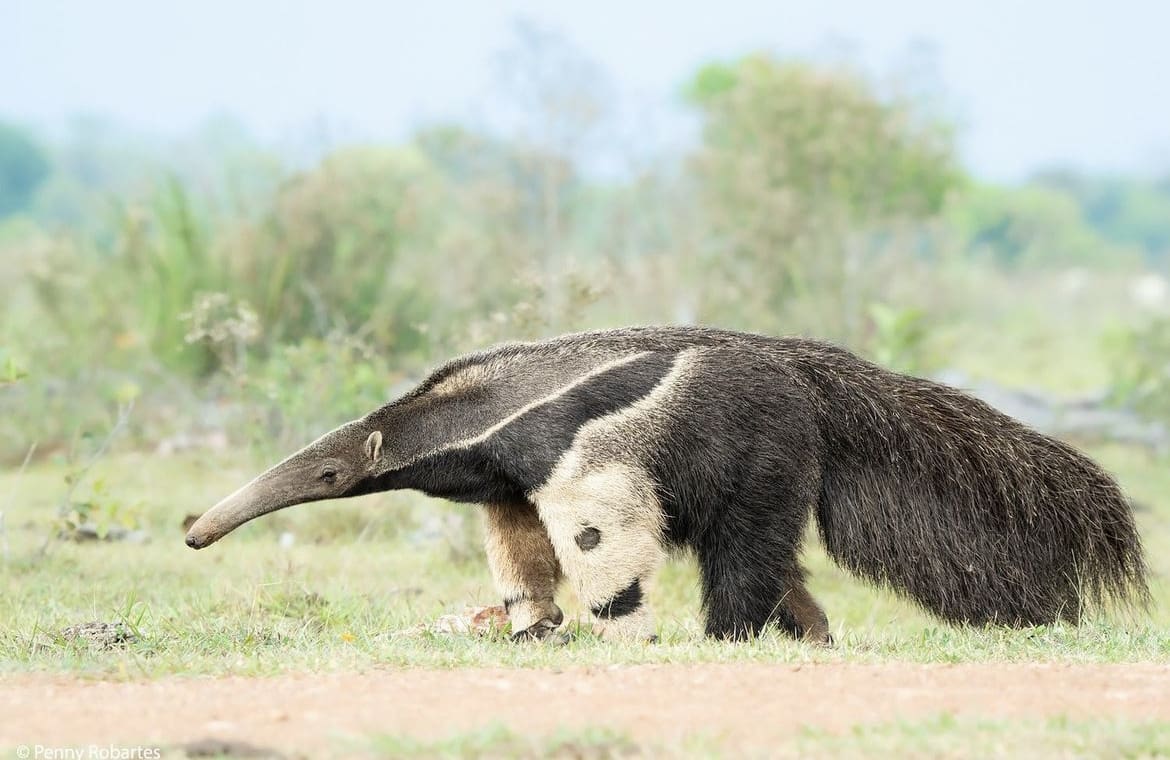
What Do Giant Anteaters Look Like?
Imagine an animal that decided to throw the traditional design playbook out the window. A giant anteater’s body is a collection of peculiar features that somehow work harmoniously. It boasts a slender, elongated snout that houses a sticky, 2-foot-long tongue – a natural pest control weapon capable of flicking in and out up to 150 times per minute. Covered in a shaggy coat of grey and brown, with distinctive black and white stripes adorning its shoulders, this creature could easily win the “Best Dressed” award in the animal kingdom.
Their legs end in formidable claws, primarily used for excavating termite mounds but also serve as a potent defense mechanism against predators. And let’s not forget about the tail – a bushy appendage that looks nothing short of extravagant. This tail doesn’t just add to its eccentric look; it serves as a cozy blanket, keeping the anteater warm during sleep
How Big Are Giant Anteaters?
When it comes to the giant anteater, size does matter. These creatures are the literal giants of their world, with adults measuring up to 7 feet from the tip of their snout to the end of their tail.
They weigh in anywhere between 40 to 60 kg (that’s about 88 to 132 lbs for those of us not metrically inclined), making them the largest of the anteater species. To put it into perspective, they’re about the size of a golden retriever, but with a much longer snout and a tail you can’t help but envy.
Giant Anteater Skin
Moving on to their skin, it’s not something that would typically come to mind when you think of these animals, but it’s as unique as the rest of them. The giant anteater’s skin is tough, acting as a natural armor against the bites and stings of the insects they feast on.
It needs to be, considering their diet. This tough exterior is hidden beneath their coarse fur, which adds another layer of protection, not just from insects but from the elements too. It’s nature’s way of giving them a built-in suit of armor, ensuring that they can dig into ant hills and termite mounds without becoming a meal themselves.

Giant Anteater Tail
Ah, the tail – where do we even start? If the giant anteater was a celebrity, its tail would have its own fan club. This bushy appendage can be as long as 2 to 3 feet, and it’s not just for show. The tail serves multiple purposes; it’s a cozy blanket, a balancing tool, and a signal flag all rolled into one. When they sleep, they curl up and use their tail to cover themselves, keeping warm and camouflaged from predators.
During their foraging expeditions, the tail aids in balance, especially when they stand on their hind legs to reach into trees. And, in the complex world of anteater social signaling, the tail’s posture can communicate mood and intent. It’s a multitasking marvel that plays a vital role in the giant anteater’s daily life.
Giant Anteater Nose
The nose of a giant anteater is more than just a snout; it’s a supercharged, bug-detecting, termite-tasting, elongated tool that seems to have a life of its own. This snout is the anteater’s claim to fame, housing a sticky, 2-foot-long tongue that’s capable of darting in and out at lightning speed. But the nose isn’t just about housing the tongue; it’s equipped with highly developed olfactory glands that allow the anteater to sniff out an ant or termite colony from a distance.
Imagine having a nose so powerful, you could smell dinner from miles away—though, in our urban sprawl, that might just be the pizza delivery guy. Regardless, the giant anteater’s nose is a marvel of nature’s design, perfectly tailored to its dietary needs.
Giant Anteater Coloration
Now, onto the fashion statement of the wild: the giant anteater’s coloration. Their fur, a mix of grays, browns, and blacks, isn’t just about looking good in nature’s runway; it’s about survival. The striking black stripe bordered by white that runs along their body, from the chest to the mid-back, isn’t just for show.
This pattern helps them blend into the tall grasses and forests they call home, providing camouflage from predators like jaguars and pumas. In the baby anteaters, this coloration plays a crucial role as they ride on their mother’s back, making them nearly invisible to any threats. It’s nature’s way of giving the giant anteater a cloak of invisibility, proving that sometimes, blending in is the new standing out.

What Do Giant Anteaters Eat?
And finally, the pièce de résistance of the giant anteater’s life: their diet. These creatures are insectivores with a capital “I,” dining almost exclusively on ants and termites. A single giant anteater can consume up to 30,000 insects in a day, which is like you or me chowing down on hundreds of sandwiches in one sitting—talk about a food challenge.
Their unique feeding method involves tearing open ant mounds or termite nests with their powerful claws and then using their long, sticky tongue to lap up the insects. They’ve got to eat fast, though, spending only about a minute at each mound before moving on, to avoid getting swarmed. It’s a tough diet, but someone’s got to do it, and the giant anteater does it with a level of efficiency that would make any fast-food enthusiast green with envy.
Giant Anteater Social Structure
The giant anteater is a bit of a loner, a solitary creature that roams the forests and plains in search of its next insect meal. But don’t mistake their solitude for loneliness; it’s simply how they roll. They come together with others of their kind only occasionally, mainly for breeding purposes. Their territories can overlap, but encounters are rare, and when they do meet, it’s usually a quiet affair.
You won’t find giant anteaters throwing wild parties in the jungle; they prefer the quiet life, wandering alone with their thoughts and the occasional ant colony for company. This solitary nature ensures that food competition remains low, allowing them to thrive in their habitats.
How Do Giant Anteaters Reproduce?
When it comes to love, giant anteaters take a laid-back approach. They don’t mate for life but come together for brief, fleeting encounters during the breeding season. After a gestation period of about six months, the female gives birth to a single baby, known affectionately as a pup.
These pups are born fully furred and are almost a mini-me of their parents, complete with the trademark bushy tail. For the first few months of their life, they travel in style—hitching a ride on their mother’s back, blending in with her fur to avoid detection by predators.
This close bond ensures the pup’s survival in the wild, teaching it all it needs to know about being an anteater before it sets off on its own.
Giant anteater mother carrying it’s baby | @sjzwicker
How Long Do Giant Anteaters Live?
In the wild, the giant anteater can live to be around 14 years old, a respectable age for such a unique creature. However, under human care in zoos, they’ve been known to live even longer, with some reaching the ripe old age of 26. Their longevity can be attributed to their adaptive lifestyle and the lack of natural predators, aside from humans and the occasional big cat.
The secret to their survival isn’t just their solitary nature or their impressive defensive skills (those claws aren’t just for show), but also their ability to adapt to changing environments and food sources. Living a life on the move, constantly in search of their next meal, has equipped the giant anteater with the resilience needed to navigate the challenges of the wild.
Are Giant Anteaters Aggressive?
Despite their formidable size and those impressive claws, giant anteaters aren’t the confrontational types. They’re pretty chill creatures, preferring to avoid trouble rather than start it. But don’t let their laid-back nature fool you; when cornered or threatened, especially mothers with pups, they can become formidable opponents.
They stand on their hind legs, using their tail for balance, and can deliver powerful swipes with their claws capable of fending off even the most determined predator. However, these displays of strength are a last resort. For the most part, giant anteaters would much rather mind their own business, focusing on their never-ending quest for ants and termites.
Are Giant Anteaters Territorial?
While they might roam vast distances in search of food, giant anteaters aren’t particularly territorial. They have home ranges, but these can overlap with those of other anteaters without much issue. There’s no “keep off the grass” sign in their world. Instead, they’re nomadic creatures, always on the move and not too fussed about staking claim to a specific patch of land.
This isn’t to say they’re entirely without boundaries; males may show some level of territorial behavior during mating season, but it’s more about impressing the ladies than about land disputes.
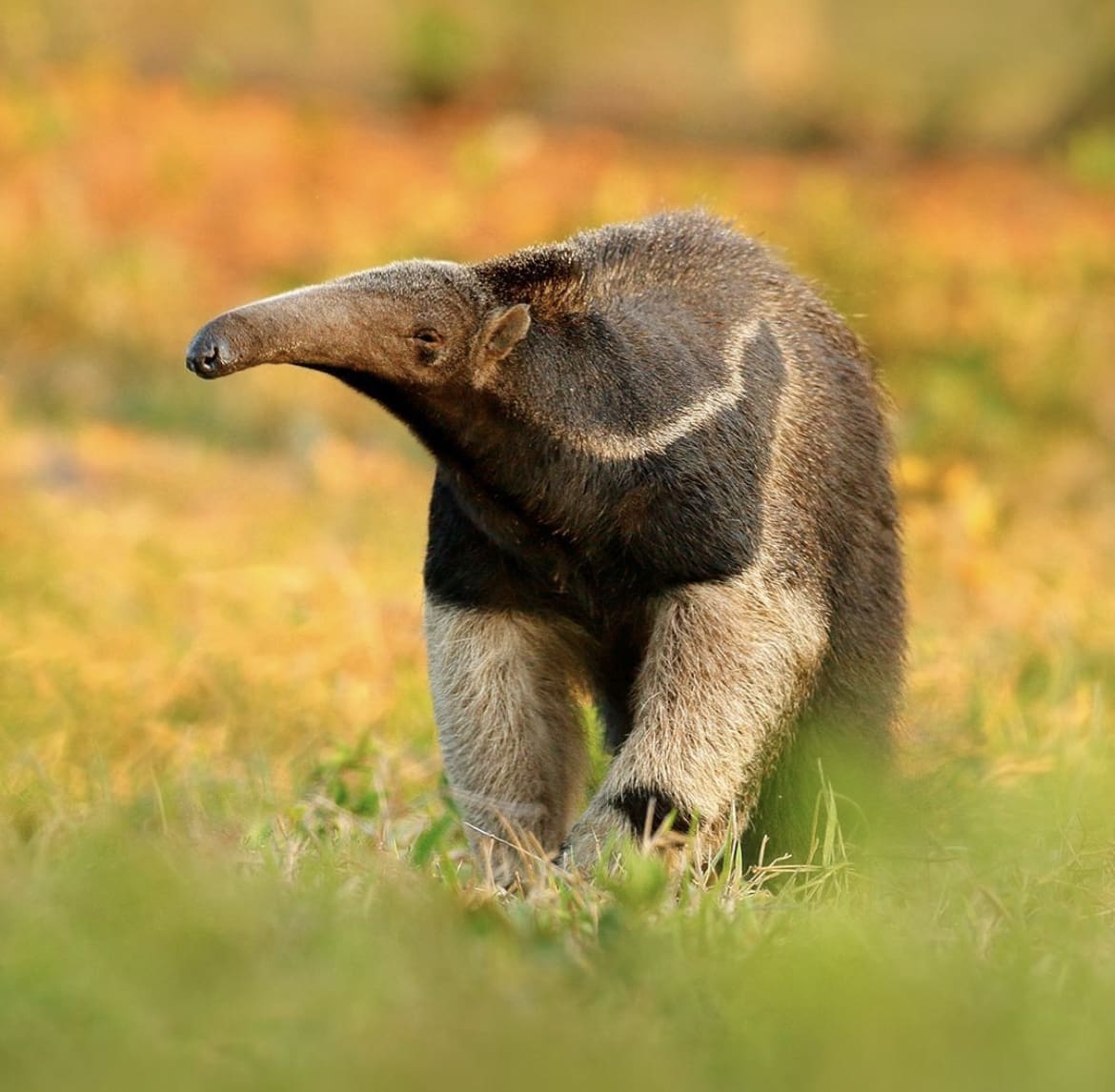
How Fast Are Giant Anteaters?
Here’s where it gets surprising: for a creature that spends most of its life leisurely searching for insects, giant anteaters can hustle when they need to. They’re not winning any sprints against cheetahs, but they can reach speeds of up to 30 km/h (about 18.6 mph) when threatened.
This burst of speed can be crucial in escaping predators, proving that the giant anteater isn’t just a slow-moving insect vacuum. It’s got moves, combining agility with power to navigate the dangers of its habitat.
Where Do Giant Anteaters Live?
Giant anteaters have a pretty extensive real estate portfolio, ranging from Honduras in Central America, all the way down through South America to the fringes of the northern regions of Argentina. Their preferred habitats? A mix of rainforests, savannas, and grasslands. These locales offer ample supplies of their favorite snacks—ants and termites.
What’s fascinating is their adaptability; whether it’s the dense, humid atmosphere of the rainforest or the open, sun-drenched plains, giant anteaters thrive. They’re the embodiment of “home is where the heart is,” or, in their case, where the ants are.
How Many Giant Anteaters Are There in the Wild?
Now, here’s where the mood might dip a bit. Estimating the exact number of giant anteaters in the wild is tricky, but what’s clear is that their numbers are declining. They’re classified as Vulnerable by the IUCN Red List, and it’s estimated that their population has decreased by at least 30% over the last decade.
The exact count? Hard to pin down, but every single one of these creatures is precious, and their dwindling numbers are a call to action for conservation efforts.
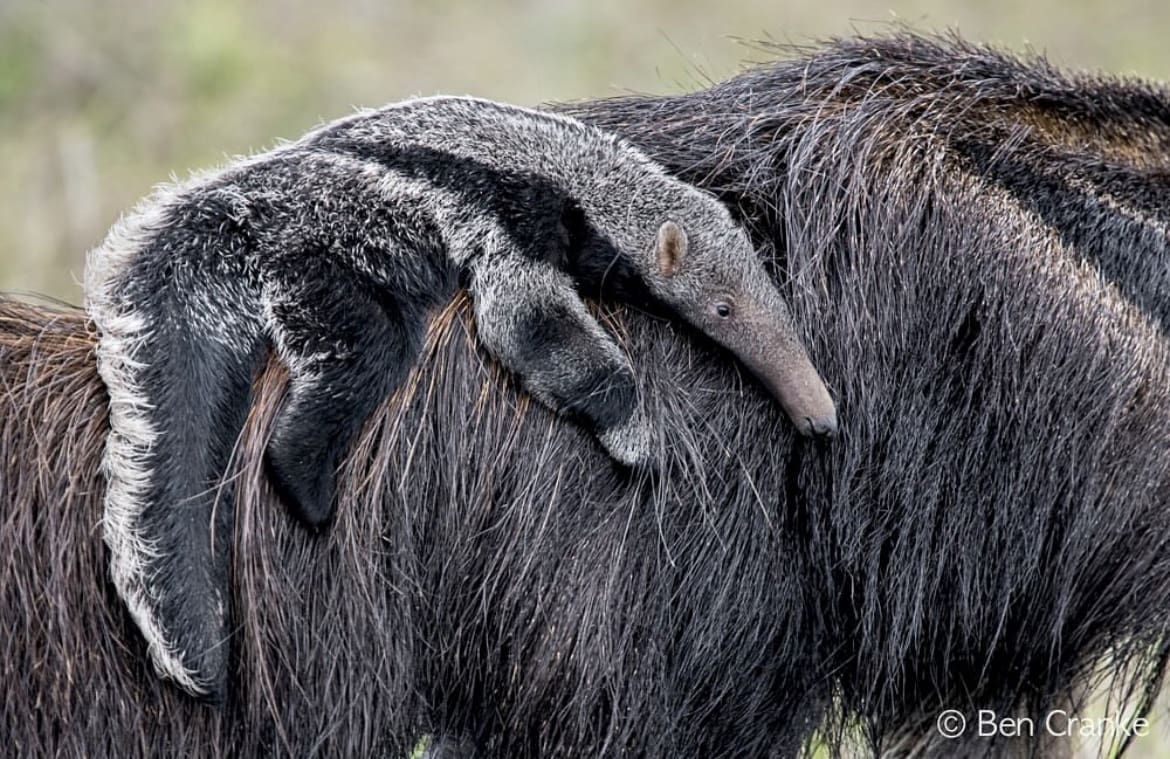
Are Giant Anteaters Endangered?
Yes, unfortunately, the giant anteater is considered vulnerable to extinction. Their biggest threats come from habitat loss due to agriculture and urban development, wildfires, and roadkills. Plus, in some areas, they’re hunted for their fur and meat.
It’s a tough world out there for these gentle giants, and their status as vulnerable highlights the urgent need for protective measures. Conservation efforts, including habitat protection, research, and initiatives to reduce roadkill, are vital to ensuring that future generations can continue to marvel at these unique creatures.
Threats to Giant Anteaters in the Wild
The giant anteater faces a gauntlet of threats in its natural habitat, making its existence increasingly precarious. Beyond the encroachment of agriculture and urban development, they are victims of wildfires, often exacerbated by human activities, which destroy their food sources and homes. Additionally, roadkills are a significant threat due to their slow-moving nature and the expansion of road networks through their habitats.
Poaching for their fur and as trophies further endangers these magnificent creatures. Each threat compounds, leading to a grim outlook without concerted conservation efforts.
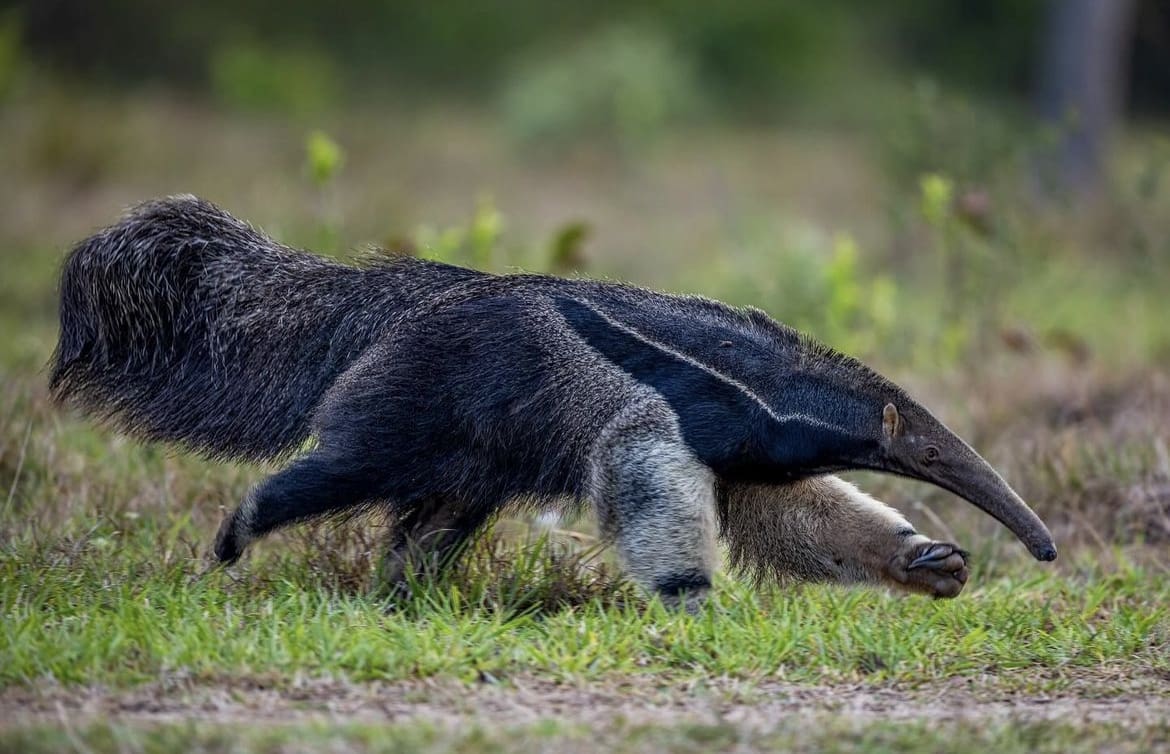
Where to See Giant Anteaters in the Wild
If you’re eager to catch a glimpse of the giant anteater in its natural environment, there’s still hope. Protected areas and national parks across South America offer sanctuary not just for anteaters but for a plethora of biodiversity. The Pantanal, the world’s largest tropical wetland area spread across Brazil, Bolivia, and Paraguay, is a hotspot for anteater sightings.
Other notable locations include the Cerrado savannas in Brazil and the Gran Chaco region, which spans Argentina, Paraguay, Bolivia, and Brazil. Visiting these areas not only provides an opportunity to see giant anteaters in the wild but also supports conservation tourism, which can be vital in funding protection efforts for these habitats.
Tips for Spotting Giant Anteaters in the Wild
Spotting a giant anteater in the wild requires patience, a keen eye, and a bit of luck. Early morning or late afternoon are the best times to see them as they are more active during the cooler parts of the day.
Moving quietly and keeping a respectful distance is key, as anteaters, though not typically aggressive, are wild animals and can be startled. Hiring a local guide can greatly increase your chances of an encounter; not only do they know the best spots, but they also understand the behaviors and patterns of local wildlife.
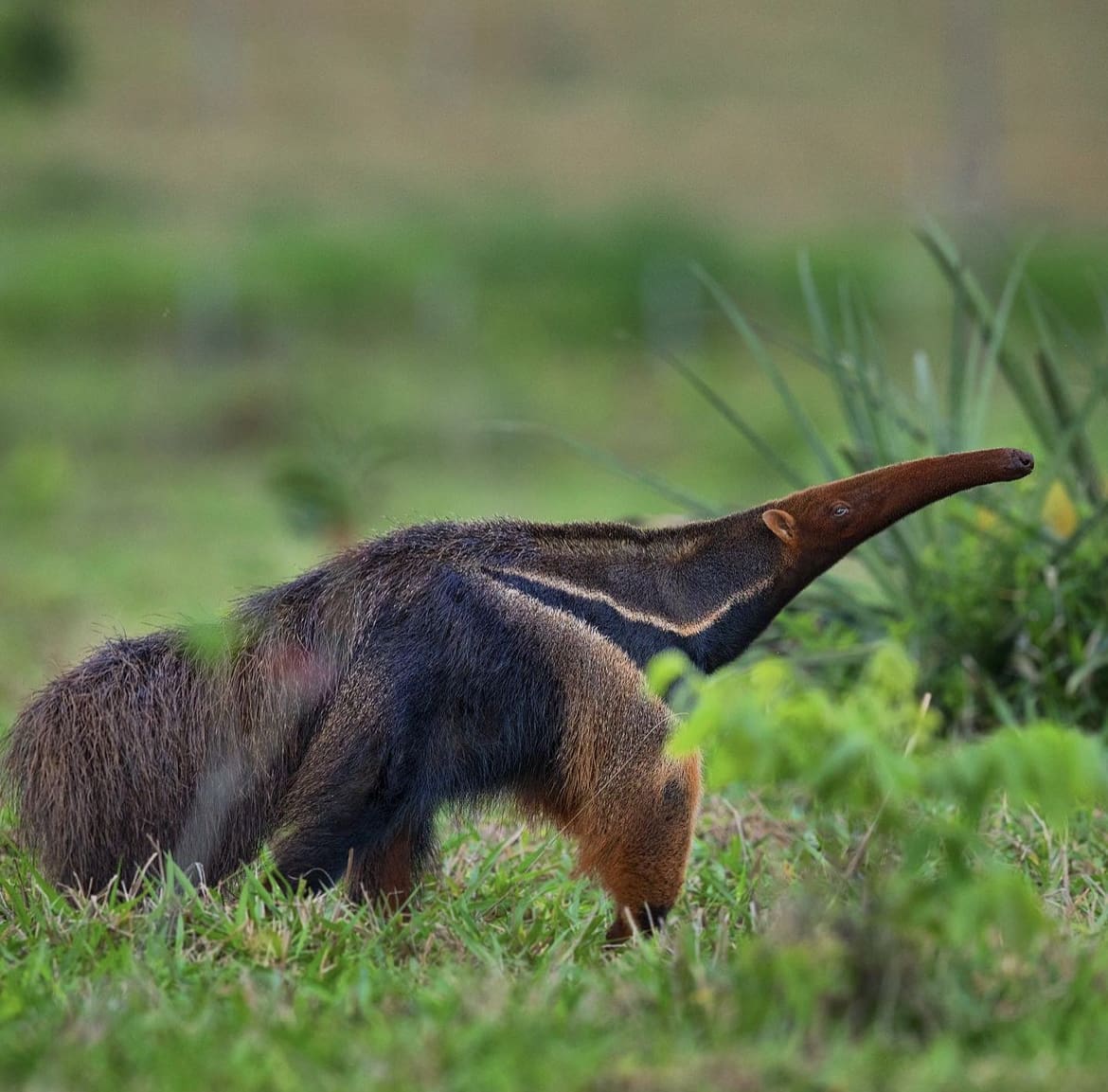
Facts about The Giant Anteater
- Giant anteaters can consume up to 30,000 ants and termites in a single day.
- They have no teeth. Instead, their long tongues are covered with tiny spines coated in sticky saliva to catch insects.
- Anteaters are capable of a surprising turn of speed, running as fast as 30 km/h (about 18.6 mph) when threatened.
- Their body temperature is lower than most mammals, hovering around 33°C (91.4°F), which conserves energy.
- A giant anteater’s sense of smell is 40 times more sensitive than that of humans.
Myths about The Giant Anteater
- Myth: Giant anteaters can eat fire ants without consequence. Reality: They avoid fire ant mounds as these ants can inflict painful stings.
- Myth: Anteaters use their claws to attack predators aggressively. Reality: They use their claws primarily for defense and foraging, not for aggression.
- Myth: Giant anteaters are related to aardvarks. Reality: Despite superficial similarities, they are not closely related; aardvarks are native to Africa, while anteaters are from the Americas.
The giant anteater is an extraordinary creature, a testament to the wonders of evolution and the diversity of our planet. Yet, their existence hangs in the balance, threatened by human activities and environmental changes. It’s a poignant reminder of our impact on the world and the urgent need for conservation efforts to protect these unique animals and their habitats.
By understanding more about the giant anteater, we can appreciate not just their uniqueness but also the interconnectedness of all life on Earth. Let’s not allow the story of the giant anteater to end in tragedy; instead, let it be a beacon of our commitment to preserving the natural world for generations to come.
